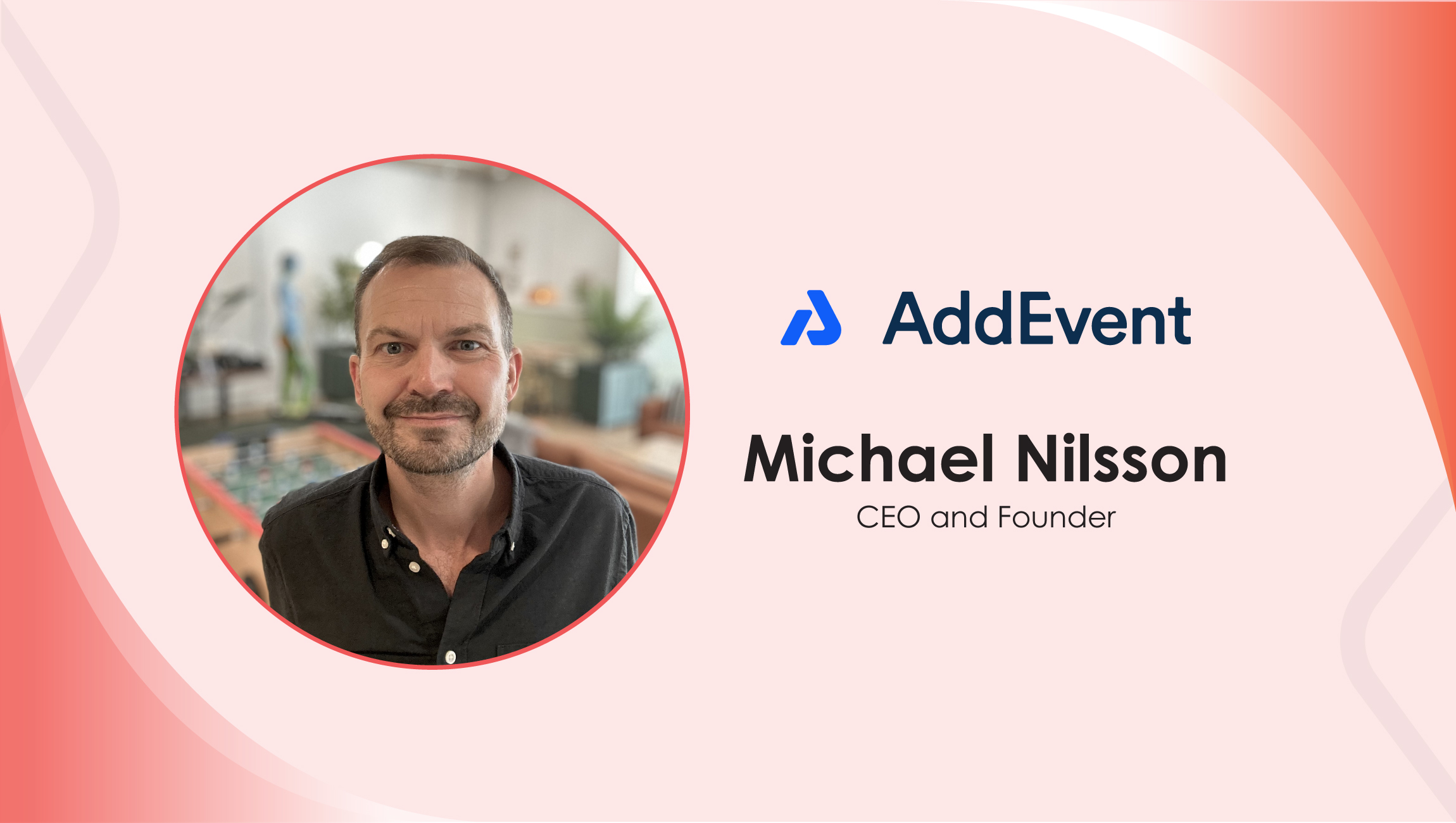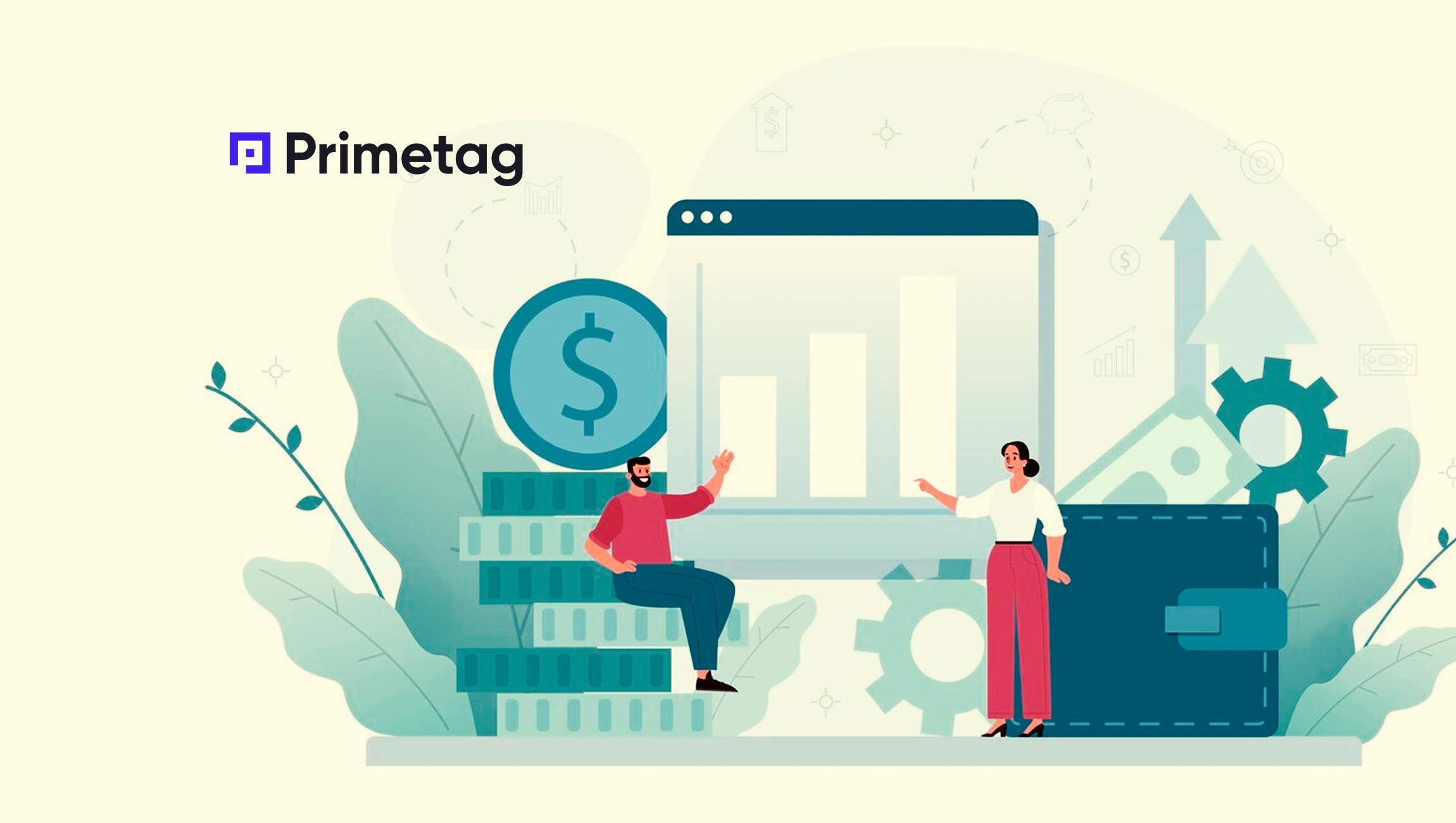Michael Nilsson, CEO and founder of AddEvent chats about the changing pace of B2B SaaS events in this catch-up with MarTechSeries:
_________
Hi Michael, welcome to this martech interview series, please tell us more about yourself and your time as Founder/CEO at AddEvent. How has the platform evolved over the years?
I was working at a design agency in Copenhagen when one of our clients requested an “Add to Calendar” button for an event page. Like many developers, I turned to Google for a solution but found the existing options unsatisfactory. Instead, I decided to create my own “Add to Calendar” button. After completing the project, I made the tool publicly available to other developers.
For the next two years, while still working at the design agency, I maintained and improved the button, responding to feedback and adding new features. As the tool gained popularity, it was adopted by more developers and eventually used by Fortune 500 companies. I continued to expand its functionality in response to growing demand.
In 2016, two business advisors from the Bay Area approached me with an offer to help scale the company in the U.S. Seizing the opportunity, I relocated with my family to California, establishing AddEvent’s new headquarters in San Mateo.
Today, AddEvent has evolved into a comprehensive events and calendar service, dedicated to helping businesses increase attendance and engagement for their events.
How has the audience and usage changed since the company’s founding?
While our initial focus was primarily on developers, we’ve seen a significant shift, with 70% of our current customer base now consisting of non-developers. As a result, we’ve adapted our approach to serve both audiences effectively. For developers, we continue to provide robust access through our APIs, maintaining the flexibility and control they expect. At the same time, we’ve streamlined our application to ensure it’s intuitive and easy to use for non-technical users, enabling them to leverage the platform without needing technical expertise. This dual approach allows us to cater to both user groups seamlessly.
This evolution reflects our commitment to enhancing usability and expanding the platform’s capabilities to meet diverse user needs.
- Developer-First Add-to-Calendar Button:
Initially, the platform was designed to provide a simple “add-to-calendar” button specifically tailored for developers to easily integrate into websites. This feature enabled users to effortlessly add events to their personal calendars with just a click. - Enhanced Add-to-Calendar Features:
We introduced a feedback option for users, which we’ve actively listened to and acted upon ever since. One key request was the ability to integrate the “Add to Calendar” functionality within emails. In response, we expanded our offering to include add-to-calendar links for emails, along with custom landing pages for each event. These landing pages can be easily shared on social media, boosting event visibility and user engagement. - RSVP:
In response to customer requests for insights on “who’s attending our events,” we introduced RSVP functionality, allowing attendees to confirm their participation. - Subscription calendars:
Our users needed a way to add multiple events to their calendars, so we developed a subscription calendar feature. The great thing about subscription calendars is that once subscribed, any new events are automatically added to the user’s calendar, ensuring they never miss an update. - User-Friendly App Interface:
To better serve non-technical users, we developed an intuitive app interface that allows anyone to easily access and use our tools without requiring technical expertise. Over time, we’ve continuously refined the design and improved the user experience. Following a Google-inspired design philosophy, we ensure everything appears simple and streamlined at first glance, while still offering extensive customization options and advanced controls for those who need more flexibility. - Embeddable Events, calendars and no-code solutions:
As the no-code movement has evolved, so have our customers’ needs. A frequent request has been the ability to easily add our components—such as widgets, events, and calendars—to their own websites. In response, we introduced features like embeddable events, event lists, and full calendars, allowing users to seamlessly integrate these elements into their sites and applications without needing any coding expertise.
Marketing Technology News: MarTech Interview with Elad Stern, President and co-founder @ Odeeo
The pace of B2B events has picked up after Covid, what key trends are you observing around B2B SaaS event marketing?
Post-COVID, the main trend in B2B events has been the re-emergence of in-person and hybrid formats. While some events remain virtual due to their cost-effectiveness and convenience, many are better suited to in-person settings. Consequently, we’ve seen a notable increase in the return of these face-to-face events.
Another significant shift is the intentionality behind event attendance. With time and resources becoming more precious, attendees are now more discerning about the events they choose to participate in. This has led to higher levels of engagement and participation, as people are prioritizing quality over quantity. They’re seeking events that provide actionable insights, valuable networking opportunities, and concrete business outcomes.
Additionally, ROI has become an even more critical metric for event marketers. With budgets tightening and increased scrutiny on spending, companies are increasingly measuring the business impact of every event—whether it’s in-person, virtual, or hybrid. The focus is now on demonstrating tangible outcomes, like lead generation, customer acquisition, and long-term business growth. This push for accountability aligns with the current funding landscape, where companies are under pressure to justify spending and ensure events contribute to broader business goals.
How can B2B SaaS brands build better event experiences today, to truly stand out?
I’m sure many people have said this before, but to truly make your event experiences stand out, I would aim to delight and surprise your attendees. People’s time is extremely valuable, and if they choose to spend it at your event, they’re placing trust in you that your event is more valuable than any other way they could be spending their time.
It’s your job to then prove them right, and to create a memorable experience. “Delight and surprise” sounds great, but it’s actually incredibly tricky to get right, because expectations are likely already high. Figure out two or three ways you can go above and beyond what similar types of events usually offer. Ask yourself – if I was attending an event, what would surprise or delight me in that setting? What’s something that’s going to make your attendees tell their friends about your event when they get home?
In addition to surprise and delight, a standout event experience must be inclusive and engaging. Bring in the right people—speakers, influencers, and attendees—who will add value to the event and stimulate meaningful networking. Creating opportunities for organic interactions and fun elements can encourage deeper connections, which leads to more lasting impressions.
Finally, the event should authentically represent the value of your brand. Everything from the content to the environment should reflect your brand’s mission, vision, and personality. When attendees feel the essence of your brand throughout the event, it strengthens your relationship with them and ensures that they associate your brand with a positive, high-quality experience.
Can you share a few thoughts on how recent innovations in martech and AI are enhancing the end to end event experience globally?
There are now more platforms than ever supporting remote and hybrid events, and their capabilities continue to improve. As marketing technology advances, event marketers can create increasingly personalized experiences. This includes tailored communications, customized landing pages, and individualized agendas, all designed to make each participant’s experience feel unique and special.
One of the most important shifts is viewing events not as isolated experiences, but as integral parts of the buyer’s journey. Martech innovations now allow event data to be seamlessly integrated into broader marketing and sales funnels. This means that events, whether virtual or in-person, are no longer one-off moments but are connected to the ongoing relationship with prospects and customers. From pre-event communications to post-event follow-ups, AI and martech tools are helping brands engage attendees in a continuous journey, delivering the right message at the right time. This alignment ensures that events contribute directly to long-term customer success.
For B2B SaaS marketers who are at the early stages of building out event marketing plans, what fundamentals would you tell them to keep in mind?
- Define your specific goals / how you’re going to measure the success of your event
- Figure out the low-cost, high-impact things you can do to set your company apart / to delight and surprise your customers
- Always be iterating – try something new with every event you run, keep what works, and test new idea when things don’t
- Create engaging sessions and content. Rather than covering too many topics, focus on a few key areas that align with your audience’s needs and your company’s strengths. Prioritize delivering clear, actionable takeaways that your attendees can implement immediately. Engaging sessions don’t just inform—they spark interaction, discussions, and new ideas that attendees can take back to their teams.
A few thoughts on the future of B2B events before we wrap up?
I foresee events continuing to get more and more customized for each individual individual, and increasingly technology enabled. I’d also anticipate some companies shifting in the opposite direction, removing as much technology as possible (no phones, no software, etc.) and intentionally making the event as real and human-centric as possible as another way to stand out and provide a special and now-unusual experience
Marketing Technology News: New Rules For Marketing Technology & Marketing Operations: How To Thrive In A Fragmented Martech Landscape?
AddEvent, is a San Francisco-based software company that offers cloud and API-based calendar solutions to improve attendance and engagement at meetings, webinars, appointments, brand activations and more.
Michael Nilsson is CEO and founder of AddEvent. As a software engineer by trade, Nilsson developed AddEvent’s initial solution, the “add-to-calendar” button, himself in 2012. Since then, he has scaled the company and its offerings to become one of the leading calendar solutions for over 250K+ customers, including Fortune 500 companies.











